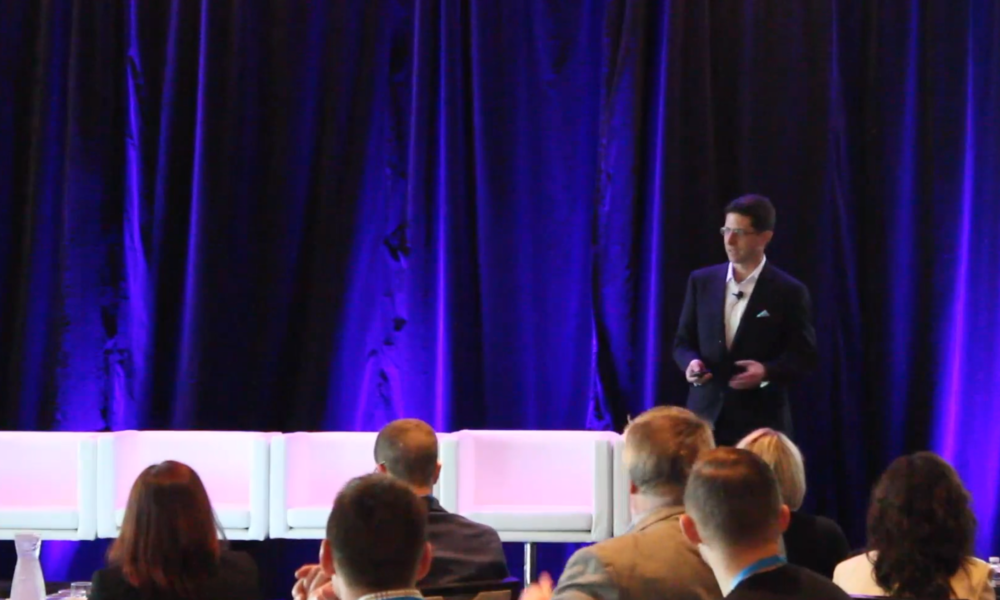Episode 21: Joe Booth on Key Competencies for Sales and Sales Enablement
3.6K Views | 19 Min Read
Shawnna Sumaoang: Hi, and welcome to the Sales Enablement PRO podcast. I am Shawnna Sumaoang. Sales enablement is a constantly evolving space, and we are here to help professionals stay up to date on the latest trends and best practices so they can be more effective in their jobs.
Today we’re excited to welcome Joe Booth to the podcast. Joe, could you take a minute and just introduce yourself?
Joe Booth: Yeah. My name is Joe Booth. I am currently the senior director of sales enablement and competitive intelligence for a company called SecureAuth and we’re in the cybersecurity space, specifically around identity access management.
SS: Excellent. So, I want to talk a little bit about key competencies for sales reps. How can sales enablement professionals ensure that their reps are meeting these key competencies before they’re released out into the field?
JB: Well, first you have to understand what the key competencies are, and that comes down to the priorities within an organization and the experience that the people who have been successful of achieving those priorities. You can’t just assume that the one size fits all for all sales reps, and that if you have an initiative that you want everybody to go execute that, people are just going to inherently know how to do that. You’ve got to take a look at what has been successful in the past and then build these programs around that. Once you have the key initiatives identified, then you start figuring out the best training modalities in order to get those out the door for those individuals.
Now, there are different ways that you can present information and get feedback back. There are a lot of tools out there that are in the ecosystem today, things like MindTickle and SalesHood, where you are able to go in and have your sales reps be able to role play with the computer and actually record themselves giving presentations, and you can provide feedback through those kinds of platforms. You can do role-playing with their managers. I mean at the end of the day; this is all about practice. You have to be able to give someone a safe environment to learn new skills. That way, when they go out into an unsafe environment, the skills are not new anymore.
You are taking this type of training mentality where you’re saying we have kind of this circle of trust where you’re going to get to fail as many times as you need, and we’re going to keep giving you feedback and getting you set up for success and eventually, baby bird, we’re kicking you out of the nest. But before we do that, we want to be able to set up things like certifications, mandatory training, role-plays with their manager, things like this.
SS: Alright. Let’s flip that around. What are some of the key competencies for sales enablement professionals, in your opinion?
JB: You know, I’m a bit skewed. I come from a sales background so the things I feel are most important are what’s going to drive a sales rep to success. There might be a lot of people rolling their eyes saying, “yeah, no duh.” But really, I’ve sat through a lot of sales enablement and training programs myself as a sales rep and I’ve just been scratching my head, wondering when I am ever going to use this in the real world. For example, you might think that it’s important to have your executives come in and talk to the new hires for several hours, and your CFO might really want to do that because they like rolling up their sleeves and meeting the new guys, but really what do sales reps care about the finance department doing? All they care about is when am I going to get my expenses reimbursed, and when am I going to get my commissions on time? Those are the only two things that a sales rep really cares about when it comes to finance.
So, you’ve got to be able to, as a sales enablement professional, set your ego aside and say what do sales reps really, absolutely need? And then what’s the easiest delivery mechanism for them? Because typically people don’t want to have to do this extracurricular training. They might not see the value in it, so you kind of have to make this really easy for them to digest, and it’s got to be relevant to their day-to-day job. Otherwise, people just aren’t going to do it. The sales enablement professionals that I’ve met that are really good at this are the ones that spend most of their time talking to sales reps and seeing what the best reps are doing and then trying to just duplicate that and scale it across the board.
Then, you’ve got to use tools and put processes in place that are going to make it as easy as possible for your reps to do the job and then hold people accountable, not at the individual level, but at the manager level, because you are not a sales rep’s boss. You’re also not a babysitter, so it’s not your job to chase people down and say, hey, do the training, finish the training. These are adults. Either they’re going to do it or they’re not. But they do have a manager that they technically report to, so if you’re a sales enablement professional and you want to get the best out of people, make sure that you’re leveraging the leadership of that individual’s boss.
And you’re going to be helping out that boss out as well, whether they’re regional vice president or whatever it might be. If you’re helping them hold their people accountable by showing them a weekly dashboard that shows the type of training people have completed or have not completed, they’re going to have more visibility in the preparedness of their team, they’re going to be able to act as a leader, they’re going to be able to practice their coaching skills, and they’re going to be able to be a little bit more of a defined figurehead within the organization when they do hold those people accountable.
The best sales enablement experts are really the ones that identify influential people within an organization, they leverage the resources that they have at their disposal, and they set their ego aside to figure out what’s the easiest thing that a sales rep can do, and what’s the most information that I can put in it with it taking up as little of their time as possible? And it’s really a balancing act, for sure.
SS: Definitely. I have to ask a question now that you brought frontline managers into the conversation. From your perspective, should enablement be focusing more on preparing those frontline sales managers or the actual sales reps?
JB: It is both. So, in my experience, the frontline manager can be absolutely worthless, or they can be so significant that they’re the type of person that will change a person’s career trajectory. Now I was really fortunate. I had a boss named Aaron Schilke when I was an early sales rep. He took a chance on me, took me under his wing, he gave me some best practices to follow as a sales rep, and whenever I needed help, he was there for me and he was always willing to give me really good feedback. But a lot of sales reps do not have a manager like that. Their typical interactions with their manager are doing a weekly forecast, talking about a deal, why it might be slipping or why it might not be slipping, and then the manager gives some very obvious recommendations that anybody that’s been doing sales for a little while can give, and they just really act as a point of escalation.
So, a good sales rep that has a good mentor is going to be way more productive than somebody that does not, so you have to be able to empower the sales rep themselves with the frontline manager as a supporting role. And in order to do that, you have to give that manager visibility into what your objectives are from a sales enablement perspective, why you’re rolling out the training that you’re rolling out, and then giving visibility into the individuals on their team that either are or are not hitting these objectives when it comes to the training. They will appreciate it because in my experience, the managers that are out there, they want their teams to be successful.
The reason they went into management is that they want to have leadership roles. They’re not 100% coin-operated because an individual sales rep can make a lot more money than their manager. I know managers that have made half as much money as their top sales reps, but they are excellent leaders, they’re extremely happy when the people on their team are successful, and they really rely on sales enablement to help provide them with the information so they can give their teams feedback and figure out where the gaps are, so they can show that they can actually mentor and provide the resources that a good sales rep or even a struggling sales rep just desperately needs.
SS: Excellent. Do you have some advice on effective ways to deliver sales manager learning and development training?
JB: You know, I think when it comes to sales managers, they are often as busy, if not more busy, than sales reps because they have a lot of deals to keep track of. So, I find that less is more when it comes to the sales managers, and it’s more about constant communication than it is about taking a day or two days to sit in a classroom. Most of the people that are out there in sales management roles have been doing sales long enough that they are able to see how the tea leaves lie, but what they’re not really good at is staying up on the day-to-day things when it comes to helping their reps. Let me give you an example of that.
We have a lot of sales leaders within our organization that have been in the cybersecurity space for decades, and they’re really good at talking to customers and they’re great at helping the reps understand what the products do, but they’re not necessarily great at being able to roll with the ever-changing process of a new leadership team, a new product roll-out, new sales messaging and all of this. In order to help the sales managers drink from that firehose, we really try and break it down in bite-size chunks.
On a weekly call with our CRO where we have our weekly revenue forecast call and all the sales managers are on it, we do take time every week to talk about sales enablement, what the initiatives are for this week, what the priorities are, why they are our priorities; and then we pull up the dashboards at a manager level so they can see how their teams are trending compared to one another, and where some of their individual contributors might be lying in the weeds a bit. Just giving them bite-size chunks and helping them have the visibility I think is going to be more effective than trying to put together big training programs that, frankly, a small organization might not be able to have the bandwidth to support.
SS: That’s excellent. I want to ask one closing question on this and then I want us to kind of pivot to a different area of focus. From your perspective, and you mentioned earlier that sales enablement is not just training, I would love to hear from you, what is sales enablement responsible for?
JB: Sales enablement is responsible for making it easy for sales reps to get deals closed. That’s the bottom line. Now part of that is going to be training them on the message and what the product does, but another part of that is figuring out what the bottlenecks are internally that you can break. That way a sales rep doesn’t have all the internal friction that makes it hard for them to get business done.
We’ve got to figure out how to make the CRM easier to use, how to make our internal processes of getting resources in place more streamlined so it doesn’t take days – which time is money in sales. You have to be able to react very quickly if you want to beat your competition. You have to be able to train sales reps on the message and the process and the systems, all of the things, but you also have to be able to go internally and look from a really strong business perspective and say, what are the operational efficiencies that we can figure out now that are going to make it easier for our sales reps to get their jobs done? And ultimately that’s going to help with things like deal velocity, deal size and also just overall morale when it comes to your sales team because you’re not sitting around waiting or scratching your head on why everything takes so long.
SS: Absolutely. Alright, as I said, I want to pivot a little bit because one of the things that we heard from a lot of our members was that they want to understand initiatives. And I know we talked about one with you, but I would love to understand from you may be one of your most impactful sales enablement initiatives to date and why that was and how you went about it.
JB: You know, the last company that I worked at, we were up against one of the largest software companies in the world. They were our primary competitor. When we had to go up against them, it was very difficult for us to get over the objection of, “Oh well, we’re already a Salesforce shop so they’re going to throw in this license for free, there’s really no reason for us to want to go buy something like you.” So, what we had to do is figure out on the few deals that we actually did win against this competitor, what did we do? What did the sales rep do on an individual level and then also from a feature function product comparison level, what were the gaps that we were filling for those customers?
In order for us to identify that, we had to put all of these catches in place, so whenever a sales rep would either win or lose a deal, we would put these fields in the CRM so they could list certain things that were contributing win or loss reasons, and then those free field notes. So that allowed us to cast a wide net and then we would drill down with individuals to gather more information. Now we started off with just a handful of deals and our win rate was low and over the course of just a few quarters, we tripled our win rate. We got it up over 84% when it came to this particular competitor and the reason that we did that is we just kept refining the process.
We kept looking at why we win and lose and then for the deals we knew we could not lose or that were just not able for us to win, we helped reps with confidence to disqualify those deals. That way they weren’t wasting time on deals that they just couldn’t win anymore, and then for the deals that looked perfect for us, we helped identify those for the sales reps so they would have specific qualification questions and then very specific discovery questions that they would ask the prospect. When we knew that we had this perfect profile of a customer, we would see our deal size go up, our sales velocity increase, and just much happier sales reps making a lot more money.
But in order to do that, you have to really pull data out of the CRM, coach people on how to plug data in accurately, and then continue to talk to reps on a one-to-one level in analyzing the deals why you’re winning and why you’re losing. And when you do that over time and it could take months or it could take quarters depending on how fast your sales cycles are, you’re going to see a lot of success. But it is tedious, it’s time-consuming, and it takes a lot of attention to detail. But it will produce results and it will definitely propel you within the organization, and your sales reps will start trusting you more and then they’re more likely to do the training when you need them to do them.
SS: Excellent. You touched on success and results. I would love to, as a closing question, just better understand from you what are those core measurements and performance measurements that sales enablement should be displaying back into their organization to prove the business impact that sales enablement is having?
JB: You know, that’s a really hard one because every organization is a little bit different. But the two that I am most focused on are our win rate and also our sales productivity, and we calculate win rate based on the number of deals that we are winning versus the number of qualified deals that we lose. When I say a qualified deal, we really want to take a look to see how far a deal advanced through our sales stages before we either lost it or before we decided that we just didn’t want to participate anymore. We look at win-loss and then we look at sales productivity, and sales productivity, the way that we define it, is just the aggregate of the entire sales organization as we hit our quota attainment.
So, if we have a revenue goal of $50 million and we hit $20 million, then you can see that our sales productivity is less than half. Those two are the big ones that we look at: sales productivity and win rate. And then you can slice and dice that pie in a million different ways when it comes to things like deal velocity, increased order size, cross-sell up-sell, all sorts of different ways.
SS: Excellent. Thank you so much, Joe. I really appreciate your time today. This has been an amazing chat with you, so thank you so much.
JB: Yeah. You bet.
SS: Thanks for listening. For more insights, tips and expertise from sales enablement leaders, visit salesenablement.pro. If there is something you would like to share or a topic you want to know more about, let us know. We would love to hear from you.











